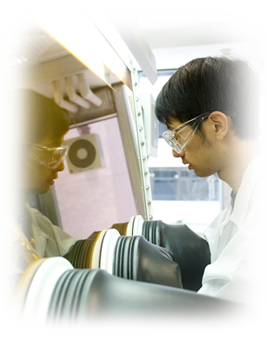| The Institute aims to develop efficient chirotechnology and its potential applications in the pharmaceutical and chemical industries. The demand for chiral products has been growing dramatically since the 1990s, and asymmetric syntheses have been employed to great effect in the production of largely chiral pharmaceuticals, flavour and fragrance, agrichemicals, etc. The most efficient and direct approach to produce chiral products is asymmetric catalysis, which involves the creation of chiral compounds from achiral starting materials with the use of a minute quantity of chiral catalyst/ligand. Thus the research focus will be on the design and preparation of highly efficient and widely applicable chiral catalysts/ligands, their application to asymmetric catalysis, establishment of a systematic evaluation scheme for assessing chiral catalysts/ligands, and creation of a platform for chiral technology engineering. |
In addition, the Institute aims to develop advanced and nano-materials towards innovative chemical technologies, seek strategic collaboration with top research groups in China and around the world, and achieve world-class excellence in the area of science and technology relating to new materials. The research consists of both fundamental work in synthesising new materials and seeking in-depth understanding of their optical/electrical/magnetic properties, and structure-property relationships, which could lead to potential applications in optoelectronic, bio-medical and environmental areas. Tentative research projects include advanced organic LED devices and solar cells, new molecular materials with photo-functional properties and energy functions for green technology, nanoparticles and their technologies, luminescent bio-imaging probes and anti-cancer research. |
